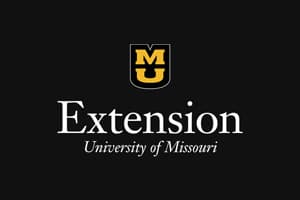Palmer amaranth is still on the move in Missouri
Palmer amaranth is a member of the pigweed family that is native to the southwest United States, but has slowly migrated into the Midwestern U.S. over the past decade or so. In the bootheel of Missouri, like western Tennessee, Arkansas, and a host of other southern states, Palmer amaranth has been the predominant pigweed species for several decades.
Cleanout and upkeep of the sprayer: Don't get complacent
The availability of dicamba-tolerant soybean this season increases the need for emphasis on proper maintenance and thorough cleanout of the sprayer system between applications; especially POST applications. The likely introduction of additional herbicide-tolerant traits in the future indicates that sprayer maintenance and cleanout will continue to be an essential focal point to avoid tank contamination and injury to subsequently…
Herbicide options for killing failed corn stands
I have already received a few calls about herbicide options for killing out poor stands of Roundup Ready and/or stacked Roundup Ready/Liberty Link corn, and I expect there will be more whenever things dry out. We conducted a few trials on this several years ago, and Dr. Larry Steckel has also published some data in the weed science literature from two years of research he conducted in Tennessee.
A final report on dicamba-injured soybean acres
Throughout the summer we have attempted to provide updates as to the extent of dicamba-injured soybean throughout the United States, either in the form of official dicamba-related cases that are currently under investigation by the state Departments of Agriculture, or as estimates of injured acreage from university extension weed scientists (see Ag Industry, Do we have a problem yet? and Update on Dicamba-related Injury Investigations…
Ag industry, do we have a problem yet?
It's funny how we can be living through a situation or watch something unfold in front of our very eyes and one person can view it one way and another can see it totally different. If you think about it, this happens all the time at sporting events. Not too long ago I was watching a Cardinals game with some Cubs fans and all of a sudden they all started yelling that our player was out when I could clearly see that he was in fact, safe…
What have we learned from four years of studying temperature inversions?
We are beginning our fifth year of monitoring inversions in Missouri. In 2017 we started expanding our inversion monitoring network and also began studying how inversions affect dicamba applications thanks to partnerships with colleagues at other states and funding from the United Soybean Board, Missouri Soybean Merchandising Council, and the U.S. Dept. of Agriculture.
July 15 Dicamba injury update: Different year, same questions
As explained in previous articles from this season (Dicamba Injury Mostly Confined to Specialty Crops, Ornamentals and Trees so Far, Dicamba Injured Crops and Plants Becoming more Evident: June 15th Update), I have attempted to provide updates as to the extent of dicamba injury throughout the United States, either in the form of official dicamba-related cases that are currently under investigation by the state Departments of…
Five things we’ve learned about dicamba
As we prepare for another year with the Xtend soybean and cotton system, we thought it would help to briefly summarize some of the most important things we’ve learned about dicamba as a result of the research our outstanding graduate students have conducted over the past several seasons.
Recovering and rebuilding after a disaster
When a disaster hits a community it can be devastating. For business owners, it can be a doubly difficult. At the same time they are facing the loss of their property and ensuring the safety of their families during the crisis, they also face another set of decisions that affect anyone involved in the business, as well as its customers and community. Feeling responsible for so many other individuals adds another layer of anxiety for…
4th annual advanced practice assessment and skills workshop
Participants of the 4th Annual Advanced Practice Assessment and Skill Workshop practice a running suture.
MU FRTI receives gift from State Farm
State Farm folks pictured in the photo are (from left) Columbia State Farm Agents Greg Hill, Stephanie Wilmsmeyer, Brian Hazelrigg, Phyllis Miller, Sales Leader Ryan Kenney, MU FRTI Director David Hedrick, D.J.
MU Fire and Rescue Training Institute to receive federal grant
Center for Domestic Preparedness Building
New grain engulfment rescue training program
Grain Engulfment Rescue Training Unit
Appointment of new special operations coordinator at MU FRTI
Ryan Rascher, Special Operations Coordinator
Appointment of new curriculum specialist at MU FRTI
Erin McGruder, Curriculum Specialist
MU FRTI receives grant from Fireman’s Fund Insurance Company’s Heritage Program
Erin Vosbrink of Fireman’s Fund Insurance (center) presents a check to University of Missouri Extension’s Fire and Rescue Training Institute (MU FRTI) to support Basic Firefighter training.
The University of Missouri Extension to bolster fire prevention efforts with FM Global grant
Engineering Specialist James Rauba (center) presents a certificate and check to the University of Missouri Fire and Rescue Training Institute from FM Global to support a fire prevention education and training project. Also pictured: Dr.
New regional training coordinator at MU FRTI
Regional Training Coordinator for Region I: Bruce Parton of St. James, Missouri
Fire Service Instructor of the Year awarded
Mark Arnold, Fire Chief, Thayer Fire Department, Instructor of the Year
New regional training coordinator at MU FRTI
Robert Creed will be responsible for coordinating training courses in Missouri State Highway Patrol Region B.
MU Extension and FRTI establishes an advisory council for the Institute
MU FRTI Advisory Council members in a planning session meeting
MU FRTI receives gift from State Farm
State Farm partnership program with MU FRTI.
MU FRTI receives equipment donation from Utilimap Corporation
The used TICs donated were valued around $1,000.00 each and will become part of the Institute’s equipment that will be used in the Firefighter Friendly Thermal Imaging course.
